page 39
Note: the contents of this page as well as those which precede and follow, must be read as a continuation and/or overlap in order that the continuity about a relationship to/with the dichotomous arrangement of the idea that one could possibly talk seriously about peace from a different perspective as well as the typical dichotomous assignment of Artificial Intelligence (such as the usage of zeros and ones used in computer programming) ... will not be lost (such as war being frequently used to describe an absence of peace and vice-versa). However, if your mind is prone to being distracted by timed or untimed commercialization (such as that seen in various types of American-based television, radio, news media and magazine publishing... not to mention the average classroom which carries over into the everyday workplace), you may be unable to sustain prolonged exposures to divergent ideas about a singular topic without becoming confused, unless the information is provided in a very simplistic manner.
Let's face it, humanity has a lousy definition, accompanying practice, and analysis of peace.
The Peace/War duo is like a two-legged stool which can not stand on its own merits unless it is flipped on its head, like a turtle struggling to right itself with its legs flinging wildly in the air. And even though many would suggest the presence of "twos" without a third, if we readjust our focus a bit, a third item may be seen. For example, in the development of life from two cells or a single cell which splits, it doesn't remain as a "two" structure since it develops into multiple cells, like adding more and more legs to a stool... yet at some point there is a conservations of number which takes place even when compression into a small space occurs. A limitation is reached... just as we must assume occurs with human imagination because a larger imagination is not needed for survival in an incrementally deteriorating environment.
In the foregoing assemblage of stools, we do not see one or two-legged stools, but we can find 3, 4, 5, 6 and perhaps artistic expressions of stools with a few more legs. However we don't customarily see stools exhibited with a quantity of legs to rival a spider or centipede. In other words, there is a limit to the number of legs being attached and whether they are constructed individually or as a composite. The configuration of the seat (circular, square, rectangle, etc...) also is of a limited design. Most are simply variations of others already developed. With the addition of padding and later the application of extensive upholstering efforts, the basic framework of a chair (designed from a stool attached with a back), can be viewed as the bony or skeletal framework. From an exoskeleton to an endo-skeletal model where the underlying frame of a chair or three-cushion couch (bench seat), have little need of artistic application unless specific curves are to be ornately covered with leather, cloth and underlying padded fixed by visible pieces of brass or other metal rivets, staples, tacks, nails, or straps.
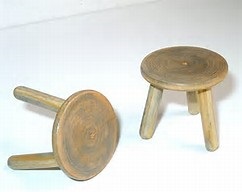 |
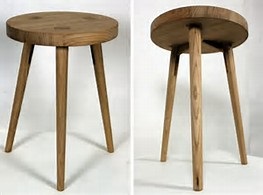 |
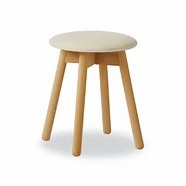 |
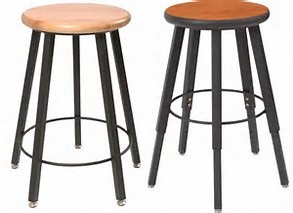 |
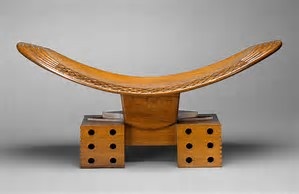 |
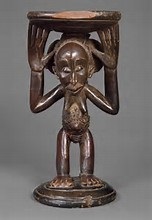 |
 |
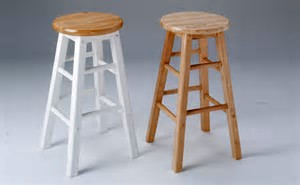 |
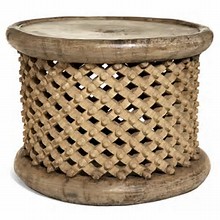 |
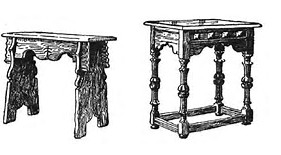 |
 |
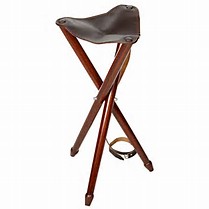 |
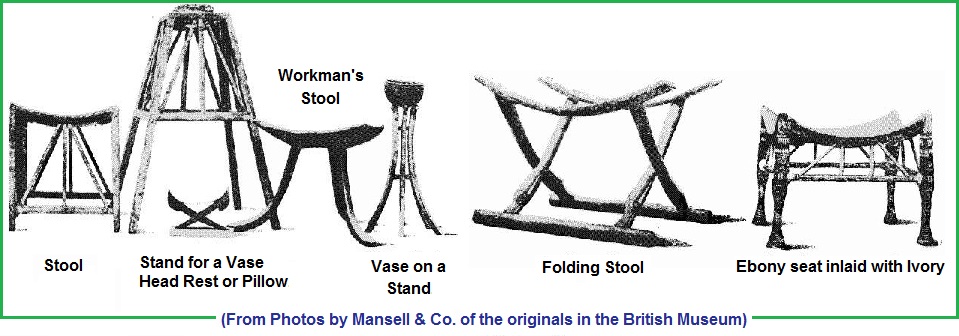
| |||
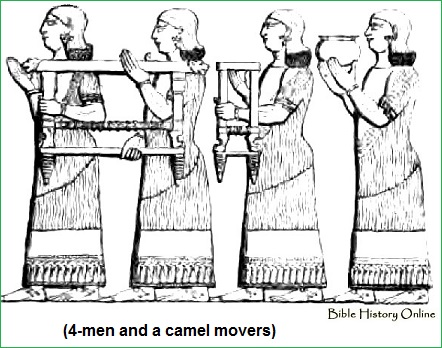 |
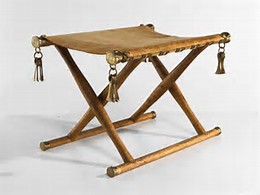 | ||
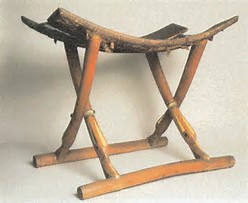 |
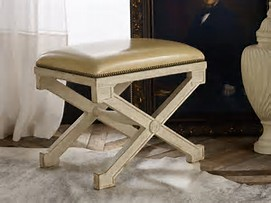 |
||
Here are some (underlined) chair and stool references from the Britannica
The scissors chair (also called X-chair, Savonarola chair, or Dante chair) was supported by two crossed and curved supports either at the sides or at the back and front. Because of its basic simplicity, it is one of the oldest forms of chair or stool, with examples reaching back to the 2nd millennium BC. The seat, which was originally made of leather or fabric, could be stretched across the upper terminals of the X-shape or inserted at a lower level, just above the intersection, so that parts of the frame could be used as armrests. Because of their scissors-like principle, scissors chairs lent themselves to collapsible construction and thus appeared as folding stools in the early European Middle Ages, when they were used mainly for liturgical purposes. In the 16th century they were also used by sedentary craftsmen such as weavers, and in the 20th they commonly appear as garden furniture and in specialized forms, such as that of sketching stools.
The scissors chair was in continuous use throughout the centuries, but it became increasingly popular at the end of the 18th century because of a renewed interest in historic furniture; other periods in which it was popular include the mid-19th century, when strip metal was used in its construction, and the opening years of the 20th century, when it was considered to be a manifestation of the Arts and Crafts Movement.
The stool is a armless and backless seat for one person. Folding stools with skin or fabric seats and solid framed stools with wood or rush seats were known to the Egyptians, the early Greeks and Romans, and the Vikings. These stools were supported on four straight legs or on four legs arranged crosswise—the “X” stool. Most variations of stool construction have been reflected either in the padded or hard top or in the support decorations.
Passing almost unchanged from antiquity into medieval use, the stool remained the common seating form. Late medieval stools, which resembled small benches, were called board, or slab-ended, stools; they were made obsolete by the standard joint stool, which was produced, in the 17th century, in upholstered sets with chairs and footstools.
The use of stools has often reflected a society's etiquette. In Europe, from the Middle Ages through the 17th century, strict protocol prescribed their use, and in Africa the stool often denotes the office of a tribal chief and carries with it religious symbolism.
By the 19th century, stools had become primarily rustic or ornamental furniture. The exception was the development of the barstool, a high stool (with or without arms and back) usually fixed to a central post and used in bars and cocktail lounges.
A faldstool is a folding stool used by a Roman Catholic bishop when not occupying his throne in his own cathedral church, or when he is officiating outside his own church. Because the stool has no back, it can be used both for sitting and for kneeling when in prayer. By extension, the term came to mean any movable folding stool used for kneeling. A faldstool is commonly composed of two pairs of crossed legs pivoting at the intersection, with each pair joined by stretchers near ground level and by a flexible (usually fabric) seat at the top. A faldstool is provided for the use of the British sovereign at his or her coronation.
The Tripod any piece of furniture with three legs. The word can apply to a wide range of objects, including stools, tables, light stands, and pedestals. The tripod was very popular in ancient and classical times, largely because it was associated with religious or symbolic rites in the form of an altar, a sacrificial basin, or the most celebrated tripod of all, the seat at Delphi upon which the Pythian priestess sat to deliver the oracles of the god Apollo. Underlying the tripod's association with such rites was perhaps a mystical significance attached to the number three. The idea of three being united in one could very well have influenced the widespread use of the tripod in Christian liturgical furniture such as candlesticks.
The most obvious functional advantage of the tripod is its property of remaining steady on an uneven surface, as seen at its most basic level in the stool. In the 17th century it became apparent that, for seating purposes, the most useful type of table was a circular one supported on a single column, and for this a tripod base was essential. The tripod remained the most common support of circular tables throughout the 18th and 19th centuries, and it is only recently that it has been supplanted either by a metal cross lying flat on the floor and supporting a slender column or by a molded plastic column with a circular base. The use of the tripod for more decorative forms of furniture (freestanding candelabra, for example) was stimulated in the late 18th century by the growth of interest in classical and ancient furniture and in the 19th by the production of cast-iron furniture, such as garden tables and similar mass-produced units.
Source: Encyclopædia Britannica Ultimate Reference Suite, 2013.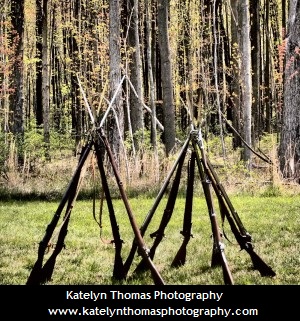
If we look upon the arrangements of supports used for chairs, tables, pedestals, stools, etc..., including the stacking of rifles in the absence of having something to house them in (which turns out to be a triangular form) set to the fashion of interlocking posts or poles used in the construction of a Native American Tee-Pee; we see linear, circular, square, triangular and perhaps a few other geometric forms that are used more along the lines of an artistic expression than a common application. The human brain and other life forms appear to make use of a limited set of configurations. The word "limited" can be viewed in terms of a "conservation" of mental activity... particularly when it is note that life forms are subjected to an environment exhibiting a primivity of design using basic structures in its recurring biological constructions. In other words, humanity's mental activities are conserved as a survival mechanism within the parameter of a conserved environmental design.
Source for rifles image: Herb's Pyramid SchemeWhile some define the act of war as an expression of basic primal behavior involving rape, pillage and plunder, one may never encounter anyone referring to peace in the same way... thus suggesting that the event of peace is a "higher order" process of behavioral activity... even though relative calm may incline to think that peace is the rule of thumb by which all living things aspire to acquire in terms of equilibrium, even while hunger, thirst and procreative considerations require increased measures of assertiveness the longer one is forced to do without... though there is a point in which dwindling energy reserves and strength diminish to the point one might do just about anything to prevent thirst, hunger... and in some cases, sex.
Basic needs of sustenance appear to most often supersede "higher order" concerns or considerations. If plotted on a graph, one value might show itself to be more dominant, prominent or larger than another one... as if they were different types of animals which inhabit their own niche', though two or more regional habitats might well overlap, such as in the case where a place of war can be preceded or/and followed by being a place of peace. However, if we view peace and war like different animals... which we often do; we can make allowances for permitting one such "peace" animal to have their own domain and be preserved by calling it off limits to those engage in war activities; such as in the case of allowing Switzerland to have and maintain an observed "neutral" status. A sort of "free zone" seen in some children's games while they're playing tag; and some criminals humorously seem to think is a given provided to them if they hide out in their home... as a sort of "home base" which provides them immunity from capture or having to play by the rules others are playing by in terms of war or cops and robbers. (After committing a crime some criminals will think to provide themselves with a socially accepted escape route or hang-out by residing in their own or someone else's home.)
While it has been customary for Switzerland to be provided with a status of being neutral, this same status might not be permitted for all countries as a means to secure itself from the aggressions of those who want to increase their resource base. The United States, France, Great Britain, Belgium, and others such as Spain, Portugal, Germany in different time periods, have all been instigators of disturbing the peace... all in the name of profit frequently defined as colonialism, imperialism, egotism, etc...
If we say that such distinctions are in the eye of the beholder, which of the three types of eyes are we speaking of? How close are they set together and to what sort of brain are they connected?
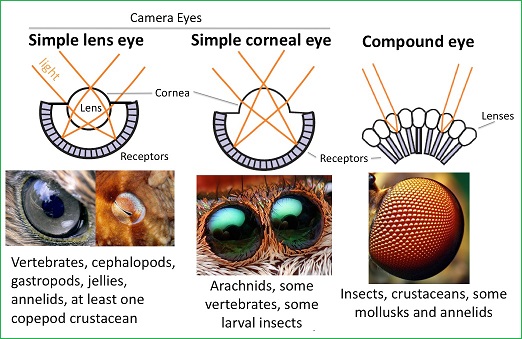
Why is there a limitation in the types of eyes? For that matter, why the conservation of brain structures? Is this because the nature of Nature has a limited range of imagination and creativity, or because due to its incremental course of deterioration, it has to be progressively limited in order to conserve resources? For example, although many of us might well describe differences seen amongst trees according to where they occur, if they bear fruit, and size, there are other ways of classifying them. One of which, in keeping with the simplistic geometric formula used for describing stools, chairs, tables, couches, beds, etc..., we can identify a linear, circular and triangular pattern seen when looking at trees seen at sea level, those in slightly higher elevations, and those typically seen in mountainous regions; of which the pine tree is so well known for inhabiting.
 |
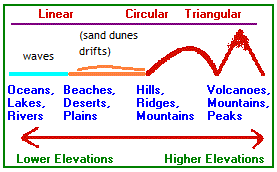 |
While the two foregoing make-shift images might be interpreted as being rather subjective characterizations, the following image concerning the three principle types of neurons might make you think otherwise:
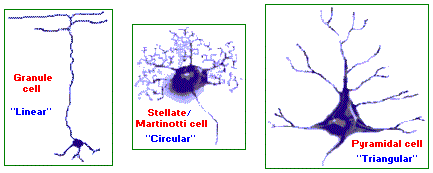
Similarly, while one may not readily see moves on a game-board such as checkers and chess or even playing cards as exhibiting the line, circle and triangle, these patterns are used... particularly since the movement in a game of multiple players frequently occurs by taking turns in a circular fashion. Also, when considering the shapes of internal combustion engines, we find linear (such as in-line, slant, and horizontally opposed), circular (such as in the Mazda rotary and old airplane piston models), as well as the V, or triangular models. And with respect to the circular motion in which engines typically move, one might want to look at the spark plug firing orders with respect to different quantities of cylinders (One, two, and three-cylinder engines are not included):
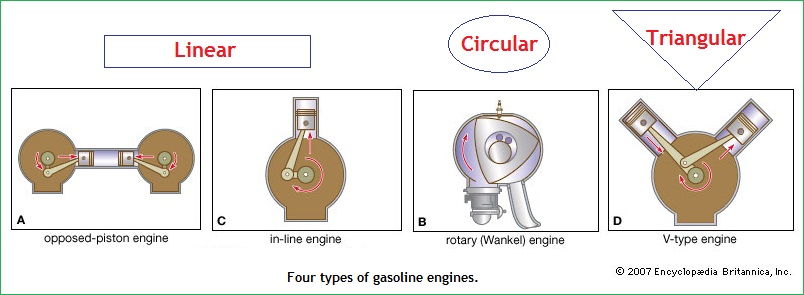
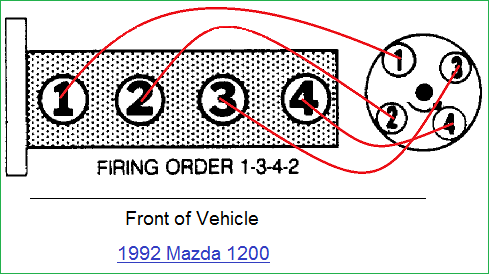 |
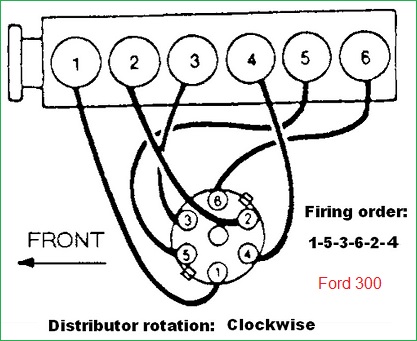 |
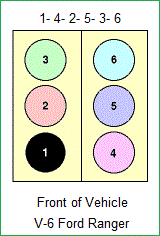 |
 |
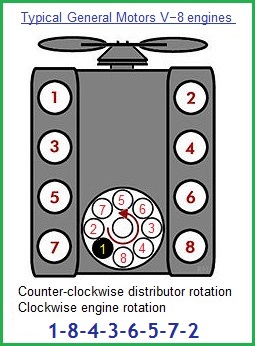 |
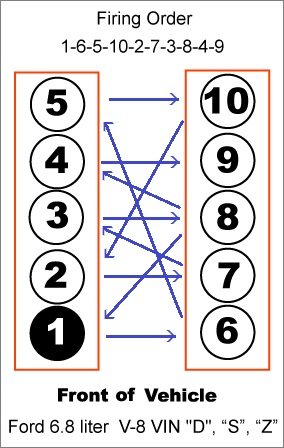 |
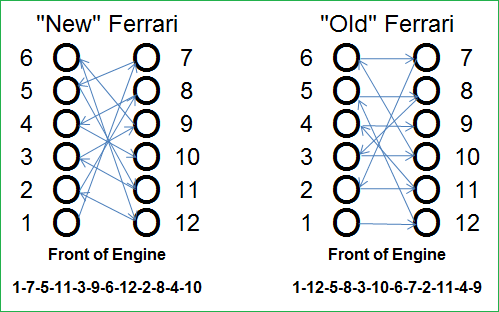 | |
The following is a brief excerpt from the Britannica citing engine operation:
Each connecting rod in an in-line engine or each pair of rods in a V-type engine is attached to a throw of the crankshaft. Each throw consists of a crankpin with a bearing surface, on which the connecting-rod bearing insert is fitted, and two radial cheeks that connect it to the portions of the crankshaft that turn in the main bearings, supported by the cylinder block. Sufficient throws are provided to serve all the cylinders, and the angles between them equal the angular firing intervals between the cylinders. The throws of a six-cylinder, four-stroke-cycle crankshaft are spaced 120° apart so that the six cylinders fire at equal intervals in two full rotations of the shaft. Those of an eight-cylinder engine are 90° apart. The position of each throw along the shaft depends upon the firing order of the cylinders. Firing sequence is chosen to distribute the power impulses along the length of the engine to minimize vibration. Consideration is also given to the fluid flow pattern in the intake and exhaust manifolds. The standard firing order for a six-cylinder engine is 1-5-3-6-2-4, which illustrates the practice of alternating successive impulses between the front and rear valves of the engine whenever possible. Balance is further improved by adding counterweights to the crankshaft to offset the eccentric masses of metal in the crank throws.
The crankshaft design also establishes the length of the piston stroke because the radial offset of each throw is equal to half the stroke imparted to the piston. The ratio of the piston stroke to the cylinder bore diameter is an important design consideration. In the early years of engine development, no logical basis for the establishment of this ratio existed, and a range from unity to 1½ was used by different manufacturers. As engine speeds increased, however, and it became apparent that friction horsepower increased with piston speed rather than with crankshaft rotating speed, there began a trend toward short-stroke engines. Strokes were shortened to as much as 20 percent less than the bores.
From the requirement for the two-cylinder engine, a general rule for the layout of the throws of four-stroke-cycle multi-cylinder crankshafts can be expressed. Regardless of the number of cylinders, two pistons must arrive at top dead centre in unison so that a second cylinder is ready to fire exactly 360° after each cylinder fires. Half the cylinders will then fire during each turn of the crankshaft. To follow this rule, there must be an even number of cylinders in order that there may be pairs of cylinders whose pistons move in unison.
An eight-cylinder engine fires each time its crankshaft makes a quarter turn if the intervals between impulses are equal. The crankshaft for an eight-cylinder, in-line engine is designed with each of its eight throws a quarter turn away from another throw.
For best lengthwise balance, the cylinders whose pistons are in phase are the first and last cylinders of an in-line engine, the second and next to the last, continuing in that order with crank throws that are in alignment equidistant from the centre of the engine.
Source: "Gasoline Engine." Encyclopædia Britannica Ultimate Reference Suite, 2013.The firing orders describe basic cognitive strategies from one point to the next and then back again, just like that seen in the Peace/War pattern that can be viewed as a two-cylinder engine, whether of the two stroke (gas/oil mix) or four-stroke (gas only) model. The back and forth cycle of the peace/war occurrences can suggest either model from time to time, with the question of oil usage and need (as in terms of economics) often being taken into consideration of whether to have peace or war in order to obtain more oil.
While we are on the subject of engines, we can look metaphorically upon the configuration of a single cylinder with an "overhead" spark plug as a sociological expression. The following illustration was created several decades ago:
In a more museful approach towards looking at life on this third planet in terms of present concerns over the breaking down of the ozone, population increase, and the purported crisis in energy resources, the following poem and illustration are offered:
|
The Sun is a 3-electrode spark-plug Earth is a hemispherical piston top social cylinder walls are getting snug, cause population growth does not stop 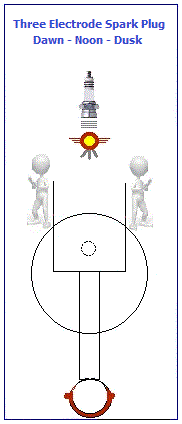 With the ozone layer breaking down
With the ozone layer breaking downour cylinder's temperature is increasing and with less oil to go around, the social machine may start seizing Shall there be a type of pre-ignition due to religion's changing octane levels or a stock-market's poorly timed selection, thereby unleashing poverty & other devils And while the people point to the gauges the politicians claim the readings are wrong they quickly tear up scientific pages, while whistling a one-line personal song If the piston cannot move up or down unless the public pays black-market prices... for a fairy tale about an energy crisis, then revolution may soon come to town But the politicians say it's all fiction in order to return a bought-for-favor since their business- cronies are on a mission, but the O' Mighty Dollar is their only savior What shall become of the social machine as it continues to use more and more fuel forging energy into a pointed bartering tool, to burst History's bubble of the American Dream? |
The so-called "four" stroke engine can be viewed as a 3 to 1 characteristic by separating the first three from the next. The usage of the word "and" between the first three and the next one is a point of demarcation in our thinking just as when we place a comma between the ones-tens-hundreds to separate them from the thousands... and then the thousands from the millions; which can also be found in the child's expression of [one for the money, two for the show, three to get ready] "and" [four to go]. We have unknowingly arranged our grammar and mathematics to coincide with the act of compartmentalizing three for the next one.
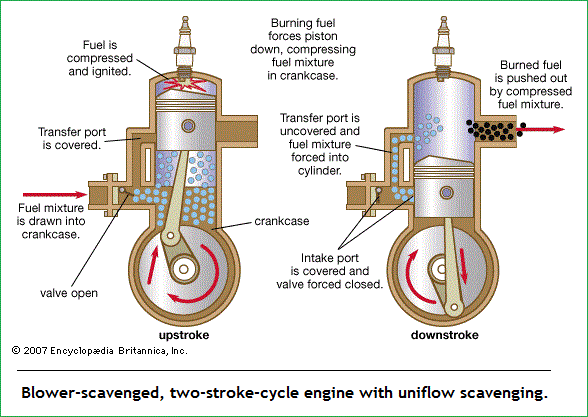 |
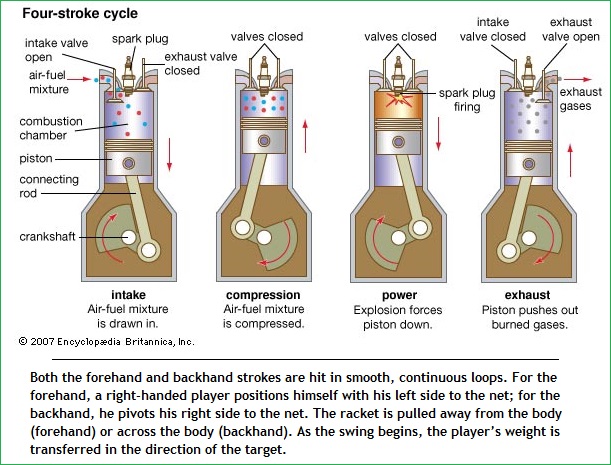 |
However, we might want to include other types of "strokes" (or swings) such as found in tennis, golf, baseball, swimming, and "smoozings" seen in interpersonal "stroking" (or grooming) behavior shared amongst humans. (Smoozing is similar to snoozing because one renders one or more others into a reposed state of quiet rectitude, like being lulled into sleep.) No less, we might include short, medium or long term "strokes of genius" such as the development of planting which was practiced in a one-field, two-field, three-field scenario that many readers may think is "too far afield" (to use a pun), of the present peace/war discussion that may be lost site of by those whose minds are not particularly flexible in viewing the peace/war sequence as a developmental cycle that actually looks more like a vehicle stuck in the mud than it does in expressing a forward progress.
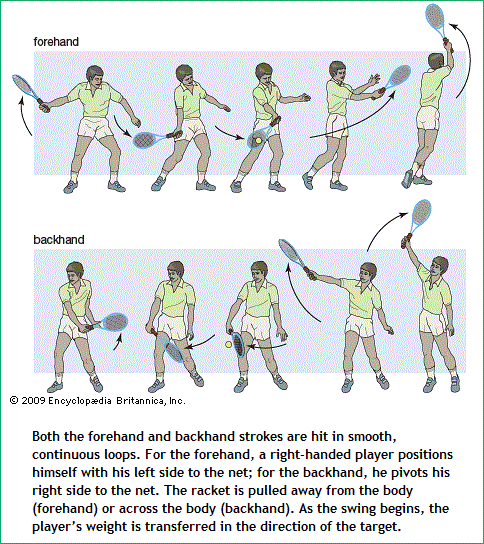
For those of you who are not familiar with the developmental 1, 2, 3 field systems, Britannica excerpts are provided, though the one-field system is arguably easy to comprehend... Besides, there is no reference to provide other than one's own appreciation of what it entails after reading the account of the two and three-field systems:
(The Two-Field System was the) basis of agricultural organization in Europe and the Middle East in early times. Arable land was divided into two fields or groups of fields; one group was planted to wheat, barley, or rye, while the other was allowed to lie fallow until the next planting season to recover its fertility. After cropping the first group of fields was turned to fallow, with the livestock permitted to graze on the stubble and enrich the soil with their droppings. Beginning about the 8th century, between the Loire and the Rhine rivers, the two-field system gave way to the more sophisticated three-field system.
(The Three-Field System is the) method of agricultural organization introduced in Europe in the Middle Ages and representing a decisive advance in production techniques. In the old two-field system half the land was sown to crop and half left fallow each season; in the three-field system, however, only a third of the land lay fallow. In the autumn one third was planted to wheat, barley, or rye, and in the spring another third of the land was planted to oats, barley, and legumes to be harvested in late summer. The legumes (peas and beans) strengthened the soil by their nitrogen-fixing ability and at the same time improved the human diet.
Because spring planting required summer rains, it was principally effective north of the Loire and the Alps. By providing two harvests a year it reduced the risk of crop failure and famine. It also made plowing more effective by two means. First, by doing slightly more plowing than under the two-field system, a community of peasants could roughly double their crop yield, though in practice the fallow was usually plowed twice to turn under the green manure. Secondly, the cultivation of a surplus of oats in the spring planting provided feed that made possible the substitution of the swifter gaited horse for ox power, after the introduction of the padded horse collar.
Sources: "Two-field system"/ "Three-field system". Encyclopædia Britannica Ultimate Reference Suite, 2013.The one, two, and three-field systems represent a development strategy being expressed by the human brain as part of a survival mechanism. However, in as much as we can recognize developments expressly illustrating an identifiable sequence we can abstract into a numerical labeling system such as the "1" and "2" and "3"; our assumption that the peace/war situation is an actual "two", may not necessarily be the case. While it is helpful in bringing to light different representative models of the 1, 2, 3 developmental sequence, the peace/war dichotomy may not in fact be a "two" preceding to a "three" expressed as either as a syllogism or Hegelian-like dialectic (Major Premise- Minor Premise- Conclusion), but may be a a singularity with a diametrically opposed construction of a basic brain pattern developed in response to a fluctuating planetary demise. In other words, the previously mentioned incremental deterioration of the planet, planetary system and galaxy may fluctuate like a lake with both occasional waves and stillness. Deterioration need not occur as a "steady-state" model as describe by the physic's model:
(The Steady-State theory) in cosmology, (is) a view that the universe is always expanding but maintaining a constant average density, matter being continuously created to form new stars and galaxies at the same rate that old ones become unobservable as a consequence of their increasing distance and velocity of recession. A steady-state universe has no beginning or end in time; and from any point within it the view on the grand scale—i.e., the average density and arrangement of galaxies—is the same. Galaxies of all possible ages are intermingled.
The theory was first put forward by Sir James Jeans in about 1920 and again in revised form in 1948 by Hermann Bondi and Thomas Gold. It was further developed by Sir Fred Hoyle to deal with problems that had arisen in connection with the alternative big-bang hypothesis. Observations since the 1950s have produced much evidence contradictory to the steady-state picture and supportive of the big-bang model.
(The Big Bang Model is a) widely held theory of the evolution of the universe. Its essential feature is the emergence of the universe from a state of extremely high temperature and density—the so-called big bang that occurred 13.8 billion years ago. Although this type of universe was proposed by Russian mathematician Aleksandr Friedmann and Belgian astronomer Georges Lemaître in the 1920s, the modern version was developed by Russian-born American physicist George Gamow and colleagues in the 1940s.
The big-bang model is based on two assumptions. The first is that Albert Einstein's general theory of relativity correctly describes the gravitational interaction of all matter. The second assumption, called the cosmological principle, states that an observer's view of the universe depends neither on the direction in which he looks nor on his location. This principle applies only to the large-scale properties of the universe, but it does imply that the universe has no edge, so that the big-bang origin occurred not at a particular point in space but rather throughout space at the same time. These two assumptions make it possible to calculate the history of the cosmos after a certain epoch called the Planck time. Scientists have yet to determine what prevailed before Planck time.
According to the big-bang model, the universe expanded rapidly from a highly compressed primordial state, which resulted in a significant decrease in density and temperature. Soon afterward, the dominance of matter over antimatter (as observed today) may have been established by processes that also predict proton decay. During this stage many types of elementary particles may have been present. After a few seconds, the universe cooled enough to allow the formation of certain nuclei. The theory predicts that definite amounts of hydrogen, helium, and lithium were produced. Their abundances agree with what is observed today. About one million years later the universe was sufficiently cool for atoms to form. The radiation that also filled the universe was then free to travel through space. This remnant of the early universe is the cosmic microwave background radiation—the "three degree" (actually 2.728 K) background radiation—discovered in 1965 by American physicists Arno A. Penzias and Robert W. Wilson.
In addition to accounting for the presence of ordinary matter and radiation, the model predicts that the present universe should also be filled with neutrinos, fundamental particles with no mass or electric charge. The possibility exists that other relics from the early universe may eventually be discovered.
Sources: "Steady-State Theory."/ "Big-Bang Model." Encyclopædia Britannica Ultimate Reference Suite, 2013.Humorously, what came before "Planck" time is easy enough to deduce when we view the word "Planck" as a misspelling for "Plank" (Since it is well known that "genius types" can be 'noteareously bad spellars'... and does not necessarily mean the obverse: that bad spellers are geniuses). Obviously, a ship would have to come before humanity is subjected to walking the plank and that some sort of conflict existed in order to induce humanity to walk the plank, blindfolded or otherwise. However, this then lends itself to being interpreted in terms of the "original sin" in some purported garden of Eden where the dichotomies of good/evil and man/woman existed... supposedly. Hence, peace and war may have originated in "Planck time"; though we don't yet know if something existed before this or if Planck time has a counter-part... thus making it a dichotomy that may or may not be heading for a trichotomous event in the Universe. If the peace/war situation is not a "stand alone" dichotomy, it may be a one dividing into two... like that seen in cellular divisions. Because humanity likes to use basic constructs for complex ideas only when it suits the personalities of researchers wanting to devise their own language to make themselves appear more intelligent than they actually are, an attempt to put all such complex ideas into a simple framework meets with opposition because this then renders the intended complexity of the proposed simplicity into a simpler model of complexity which deprives their ego of an imagined self-importance.
Date of Origination: Friday, 24-Feb-2017... 05:20 AM
Date of initial posting: Wednesday, 08-March-2017... 10:43 AM
Updated posting: Saturday, 31-March-2018... 12:23 PM